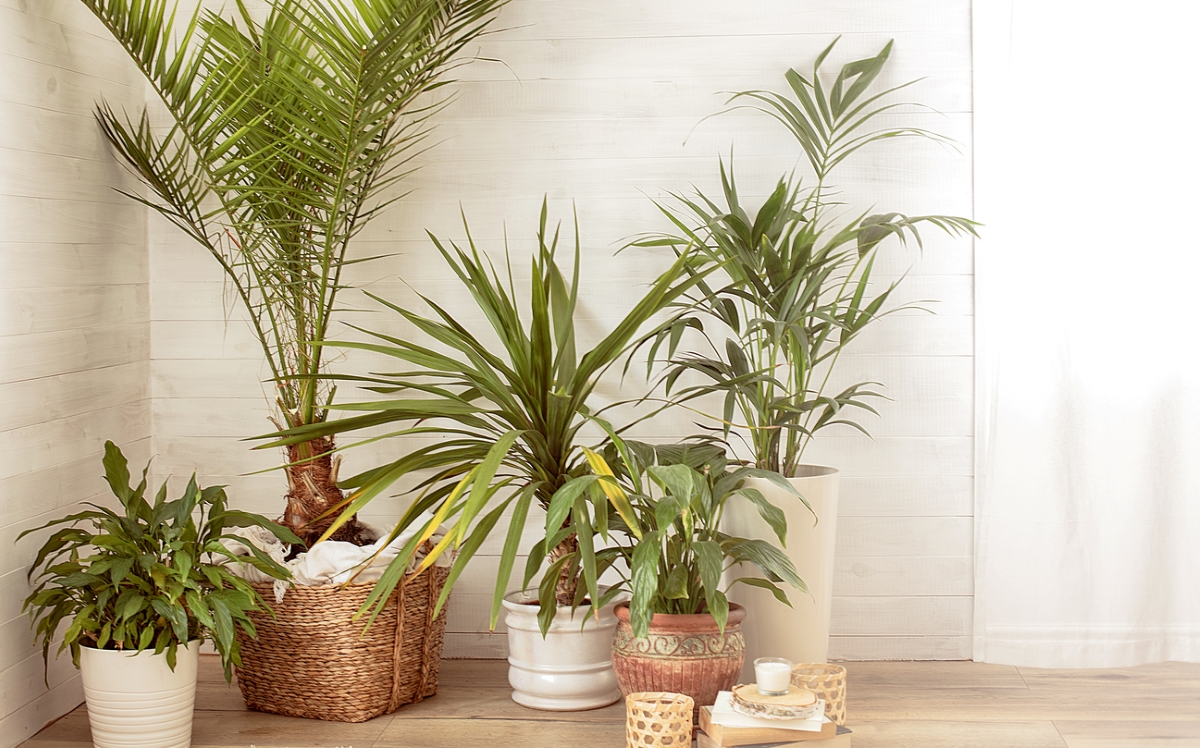

We may earn revenue from the products available on this page and participate in affiliate programs. Learn More ›
As Tovah Martin notes in Once Upon a Windowsill, “When the Victorians first laid eyes on palms in the great public gardens, it was definitely love at first sight.” Gardeners’ “frond-ship” with indoor palm plants’ feathers and fans continues to this day due to the tropical species’ tolerance of household conditions.
When asked about her favorite, Barbara Pleasant, author of The Complete Houseplant Survival Manual, replied that some palms “are a bit challenging because they get so big and need lots of sun, but I do like good old parlor palms (Chamaedorea species) because they are easy to please.”
1. Bamboo Palm (Chamaedorea erumpens)

One member of that easy-to-please genus, named for the resemblance of its cane-like stems to bamboo, this palm grows to 7 feet indoors with long arching leaves composed of relatively broad leaflets. As good-natured as other parlor palms so popular for growing in dim Victorian interiors, it requires only medium illumination (bright, indirect light or only morning sun), medium and consistent moisture, and medium humidity to thrive. Keep in mind that palm plant care generally can’t include any cutting back, except for removal of dead fronds, since top pruning might kill the plant.
2. Cat Palm (Chamaedorea cataractarum)
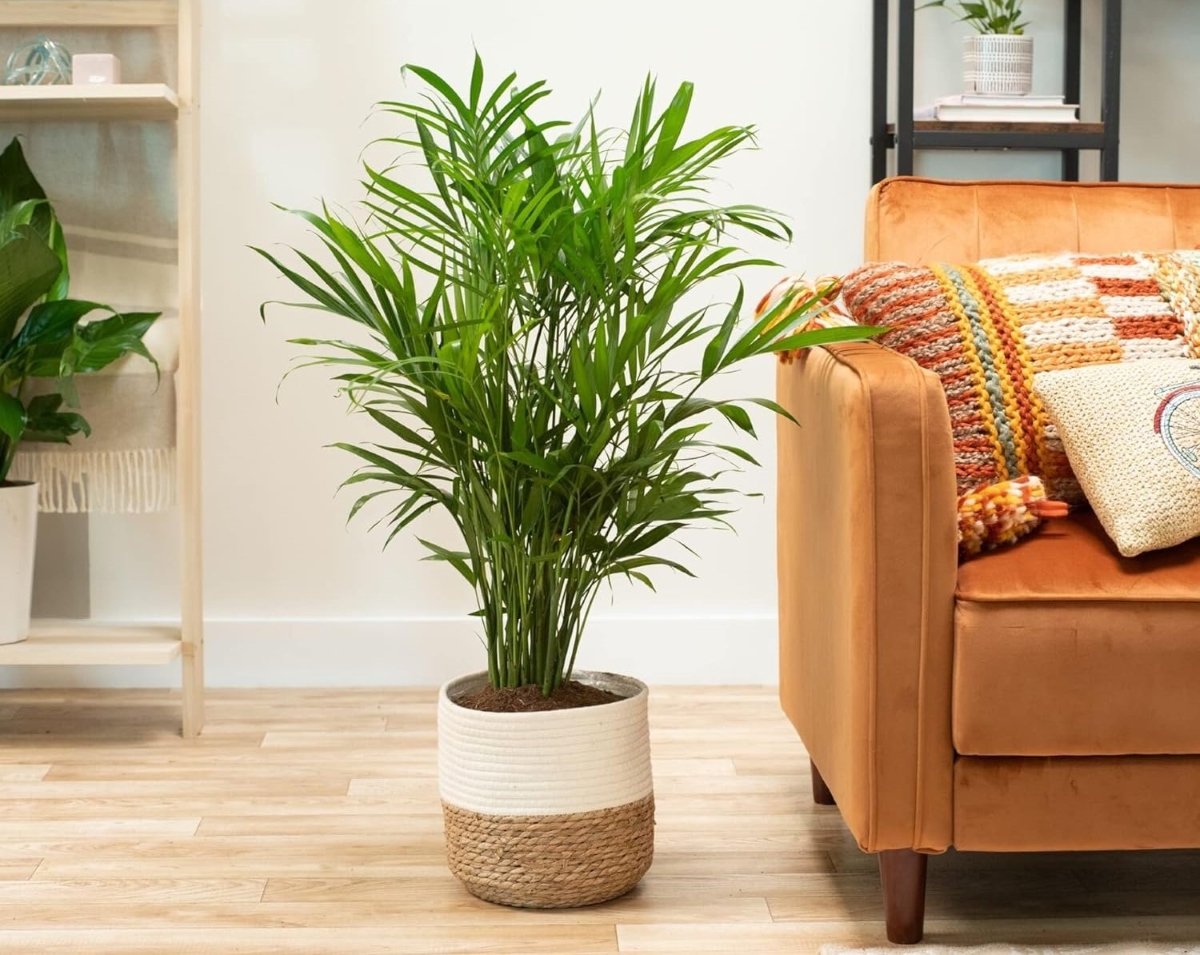
Called “one of the easiest parlor palms to grow indoors” by Clemson Cooperative Extension, this palm tree houseplant has nothing to do with cats and everything to do with cataracts (waterfalls) in relation to its feathery cascades of stemless foliage. Its care is the same as that of the closely related bamboo palm.
RELATED: 16 Houseplants That Are Safe for Cats
3. European Fan Palm (Chamaerops humilis)
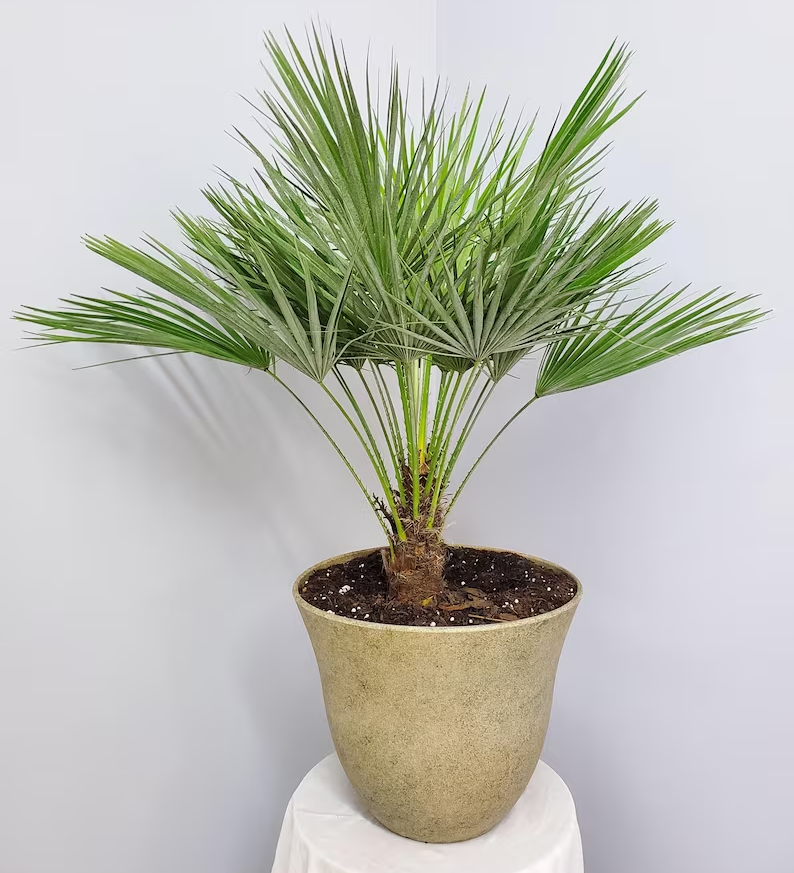
Also providing a Victorian vibe through flourishing fans, this palm produces many gray-green 2-foot wide leaflets that are stiff half-circles. It grows to about 4 feet indoors. The European fan palm prefers a location that provides it with some direct sun—about 4 hours per day—followed by bright indirect light. So, it should thrive near an east-facing window. One of the hardier types of palm trees, it prefers cool nights and cool winters at 50 to 60 degrees Fahrenheit. Its soil should be kept damp during spring and summer but allowed to dry out to 2 inches down during fall and winter.
4. Fan Palm (Livistona chinensis)

Another of the fan types of palm plants, this one doesn’t look as stiffly starched as the previous species but dangles its fans a bit like a tired belle nearing the end of the ball. Also known as the Chinese fan palm and growing to 5 to 8 feet indoors, it has a softer, more cascading appearance than the European type but its care conditions are similar.
5. Feather Palm (Chrysalidocarpus lutescens)
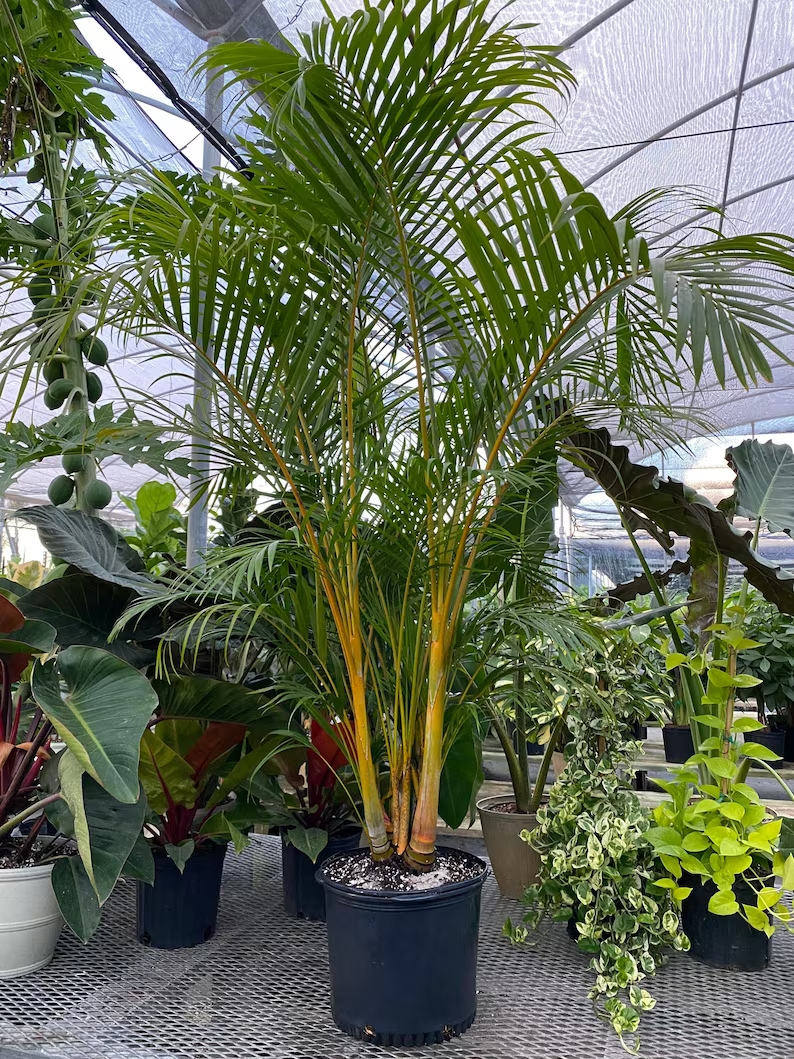
Also known as the areca or golden cane palm and reaching 6 to 7 feet high when grown indoors, this variety of indoor palm tree offers yellow stems and feathery fronds that more closely resemble Victorian ostrich plumes than fans. It prefers bright, indirect light and typical household temperatures. As with most other palms, it should be kept moist in summer and a bit drier in winter.
6. Fishtail Palm (Caryota mitis)

One of the more unusual palm houseplants that is named for the leaflets of its fronds resembling fish tails, this species reportedly grows to 10 feet indoors and tolerates a wide variety of light, temperature, and humidity levels. However, being a rainforest plant, it probably will do best when given warm days, cool nights, slightly moist soil, bright, indirect light, and high humidity. An important part of indoor palm plant care is never moving a plant too abruptly. Most species sold as houseplants have gradually been adapted to low illumination and won’t react well to being suddenly shifted to brighter locations.
7. Grass-Leaved Parlor Palm (Chamaedorea seifrizii)
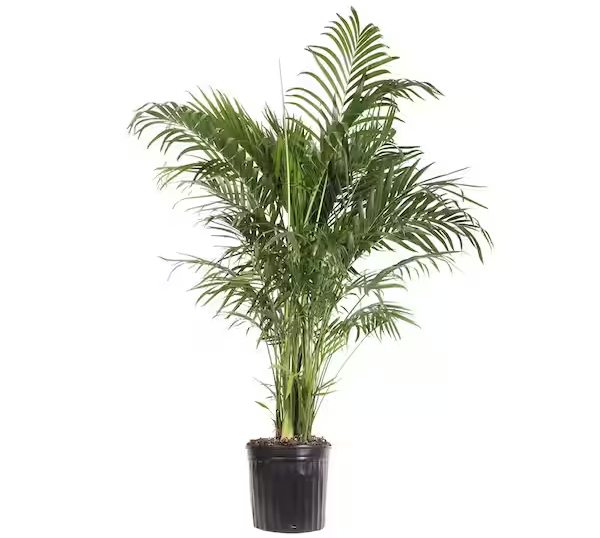
Another of the parlor palm plant varieties, this palm grows 8 to 10 feet high. The grass-leaved palm is similar to the bamboo palm with cane-like stems, but its leaflets are longer and narrower than those of C. erumpens. Palms marketed as “Florida hybrids” derive from crosses between the two species, so you can give them the same care that you would other parlor palms, including high to moderate humidity.
RELATED: 9 Types of Palm Trees That Thrive in Warm and Sunny Climates
8. Kentia Palm (Howea forsteriana)
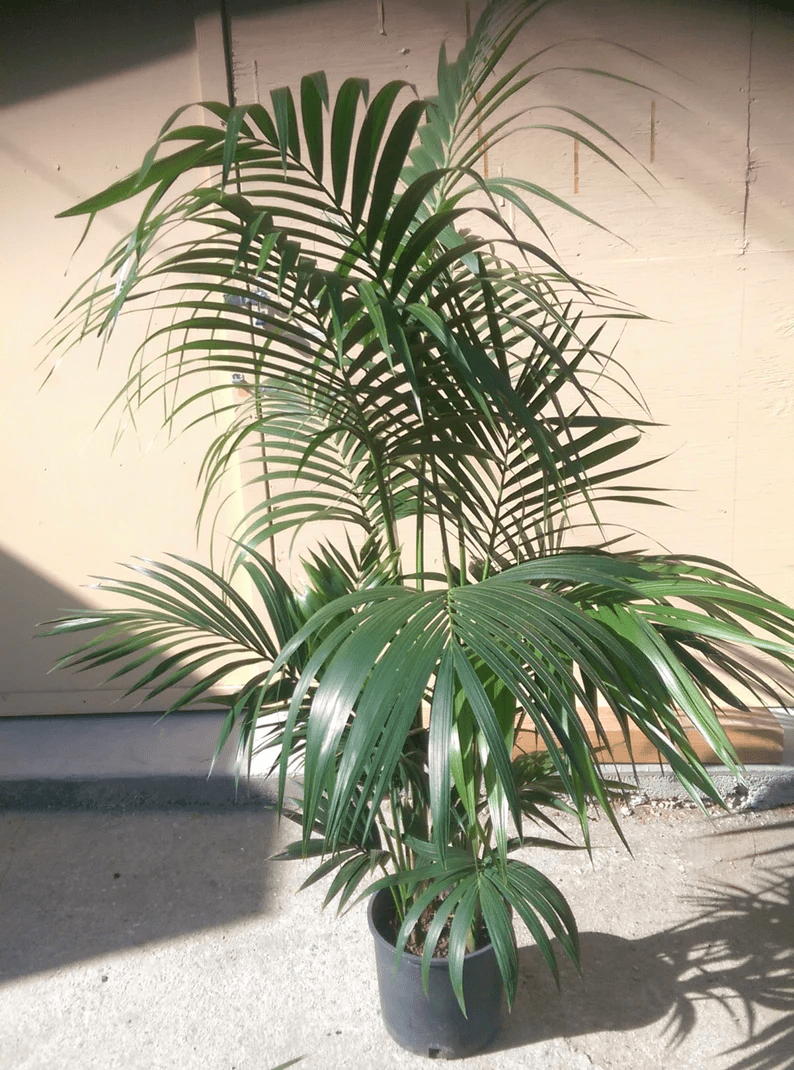
Named for a British botanist rather than a British county, the Kentia palm actually hails from Lord Howe Island near Australia. This dark green species with somewhat relaxed-looking fans of leaves can eventually reach 8 feet but will require many years to do so indoors. It responds well to bright, indirect lighting and the typical frequent watering in summer, with a drier winter watering regime.
9. Lady Palm (Rhapis excelsa)

The lady palm is among indoor palm trees that also carry fans, though its sparse and glossy half circles of leaflets more closely resemble a fan’s sticks without their cloth covering. Growing to 6 feet indoors, it often is confined to small size-limiting containers for use as bonsai. It will thrive near an east-facing window or in bright, indirect light elsewhere. Allow it to dry out a little more than you would other palms, down to 1 inch below the soil surface in summer, 2 inches in winter.
RELATED: 13 Plants You Can Winter Indoors
10. Majesty Palm (Ravenea rivularis)
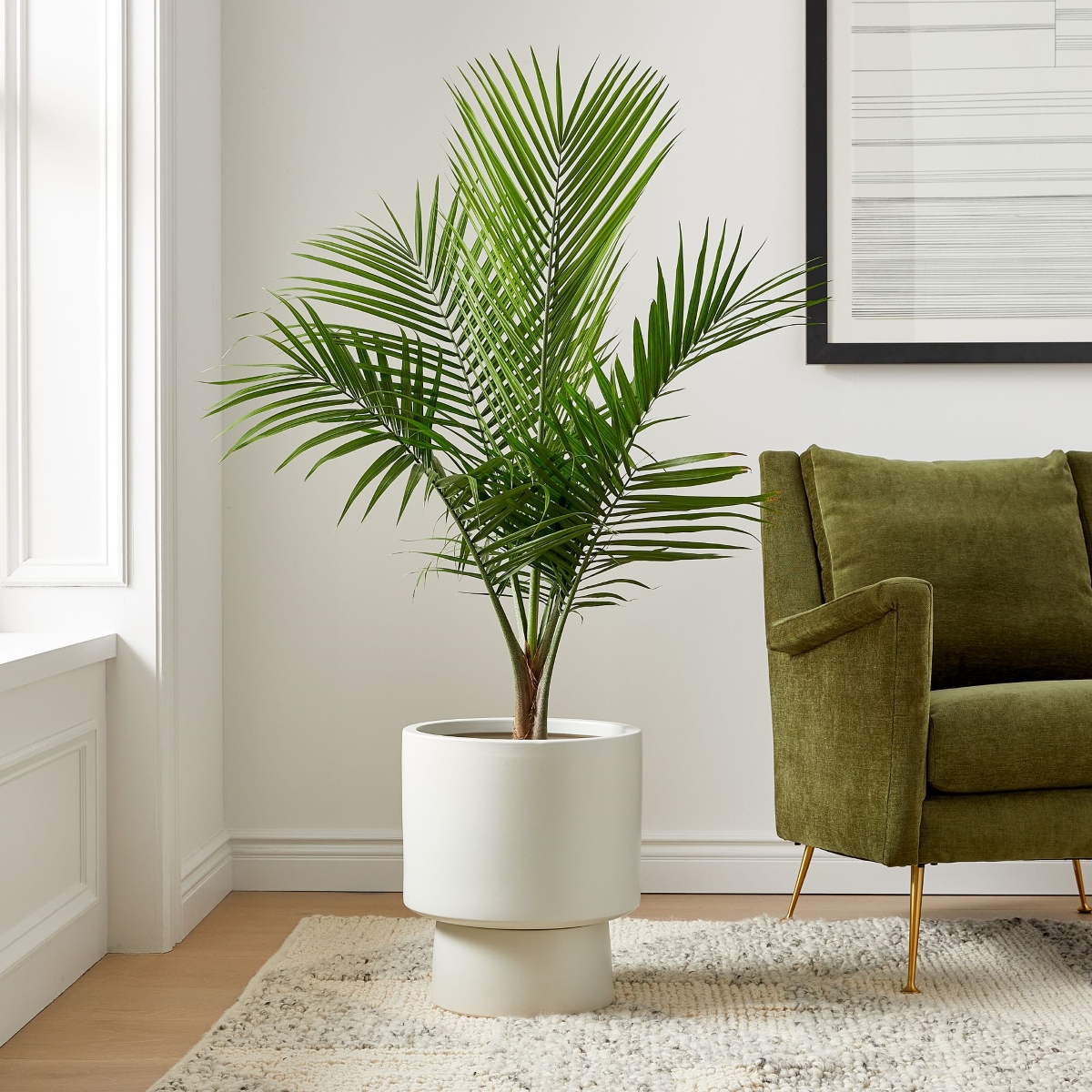
A majesty palm usually has only a single stem (unless more than one plant has been placed in the same pot) and arching feathery growth. Growing 5 to 10 feet tall under ideal conditions indoors, it prefers bright to medium indirect light, moist soil, and high humidity, so you may want to place it near a frosted window in your bathroom.
11. Parlor Palm (Chaemaedorea elegans)

The quintessential parlor palm, this one can reach 6 feet in height but generally doesn’t surpass 3 or 4 feet. Often listed among the low-light houseplants, it actually prefers medium indirect light, and slightly moist soil year-round. So you won’t need to make seasonal adjustments for it, though it may require more fertilizer than most palms. Pleasant warns that “the one thing to watch is water. Water that contains chemicals can cause the leaf tips to turn brown.” However, that symptom also can be due to too much sun or too little water.
12. Pygmy Date Palm (Phoenix roebelenii)
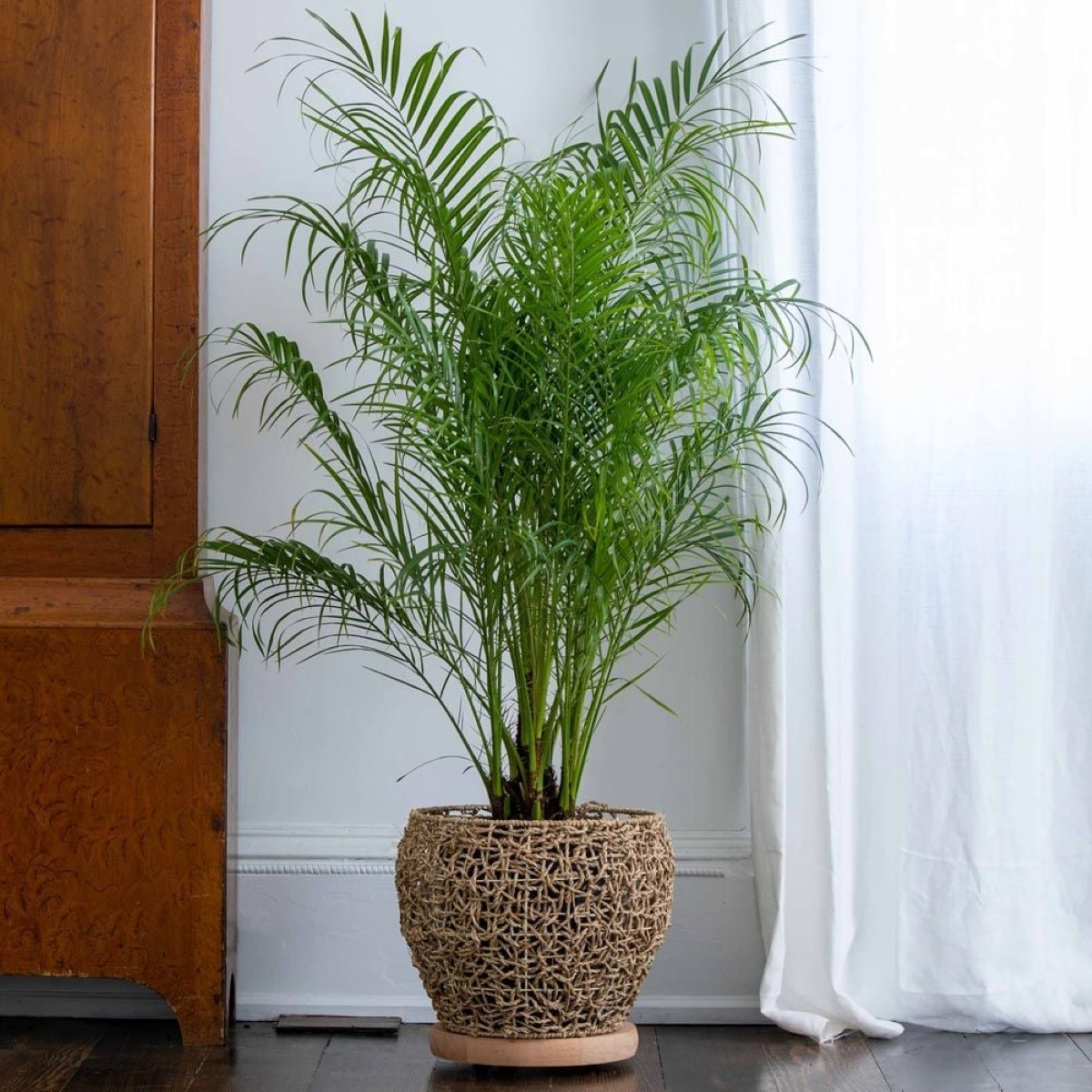
One of the smallest of the potted palm plants, the pygmy date will produce fruits, but seldom does so indoors where it generally doesn’t surpass 4 to 5 feet in height. So, you should grow it for its finely cut foliage instead, keeping in mind that the foliage harbors thorns near the base of each frond. Give it the same care that is specified for the lady palm above.
13. Sentry Palm (Howea belmoreana)
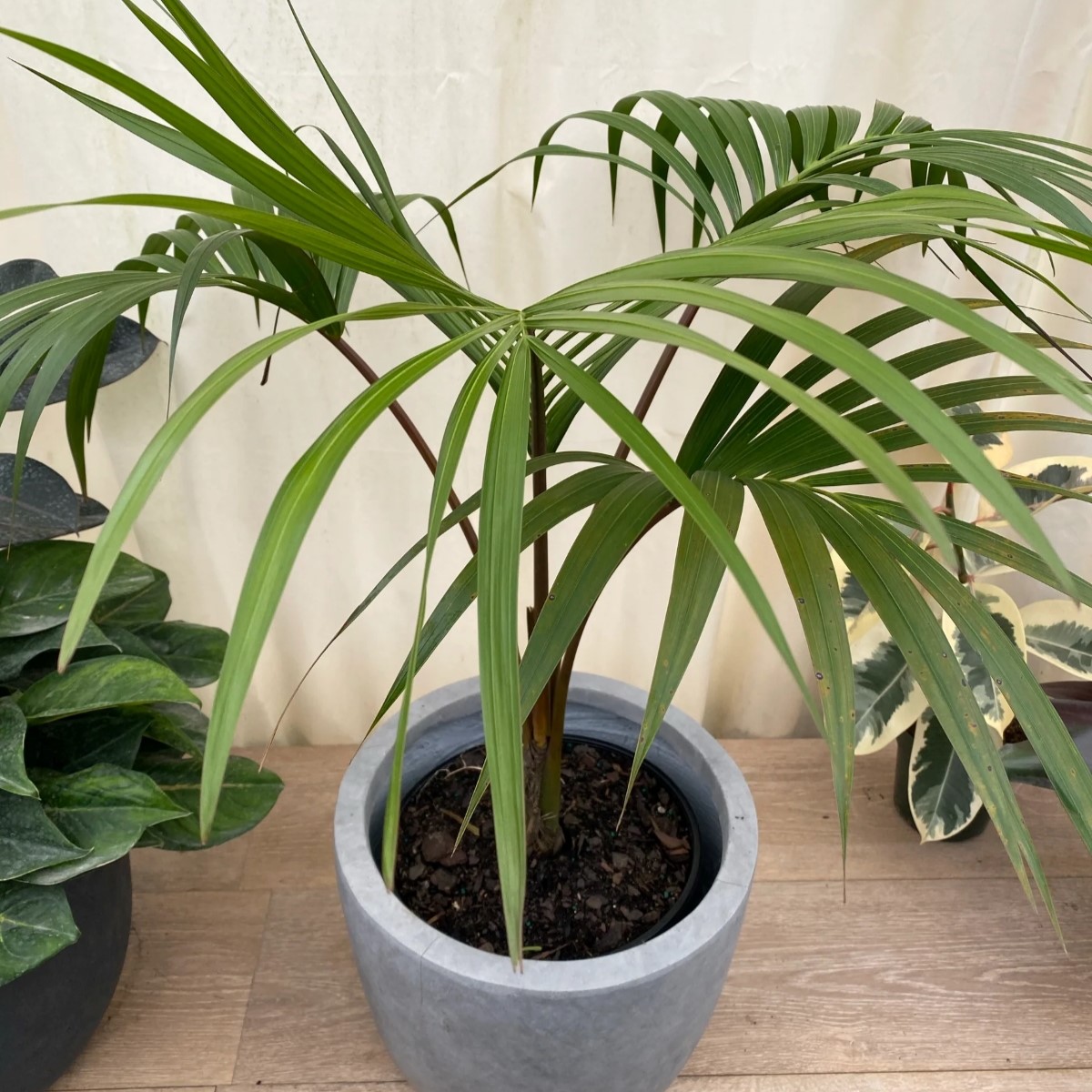
Closely related to the Kentia palm and sometimes called curly palm, this species reportedly has narrower spaces between its leaflets than the Kentia type does, and those leaflets may curl a bit. It is also slower growing than its relative, perhaps eventually reaching 10 feet indoors, and requires higher humidity to thrive. Still, it can stand guard in positions offering only bright, indirect light, which might make it a good choice for a bathroom. Just don’t water it with chlorinated water, because it is a sensitive sentry.
